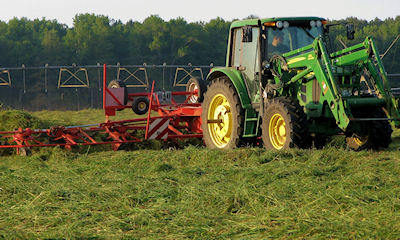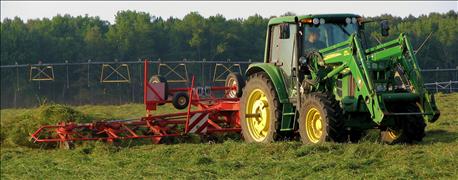July 13, 2015

Heavy and thick crops of triticale and red clover may be nice problems to have. But having a tedder in your back pocket eases the challenge of getting it dry enough for haylage-in-a-day, says Tom Kilcer, certified crop advisor at Kinderhook, N.Y.
Here's Kilcer's advice on making it happen:
Harvesting triticale with yield of more than two tons of dry matter per acre or first-cutting red clover can be a challenge to get dry enough for haylage-in-a-day under many conditions. This is where a tedder can make all the difference.
"Yes, it is a second trip over the field," he acknowledges. "But increasing feed value and not getting the crop rained on are worth the effort and expense."

Got heavy hay? Bring on the tedder
For both triticale and heavy red clover, tedding two hours after mowing made all the difference in drying rate. It got the bottom layers up and exposed to the sun.
Of course, with a heavy crop you need to run the ground speed slower. After all, tedders are not designed to handle that heavy volume of material. Too fast a ground speed will make nondrying "tedder lumps" or piles.
The added benefit is that if your mower does not leave a wide swath, tedding shortly after mowing will correct the problem and allow you to have same day haylage.
For more of Kilcer's haylage-making advice, click on 5 ways to mess up haylage-in-a-day.
You May Also Like




